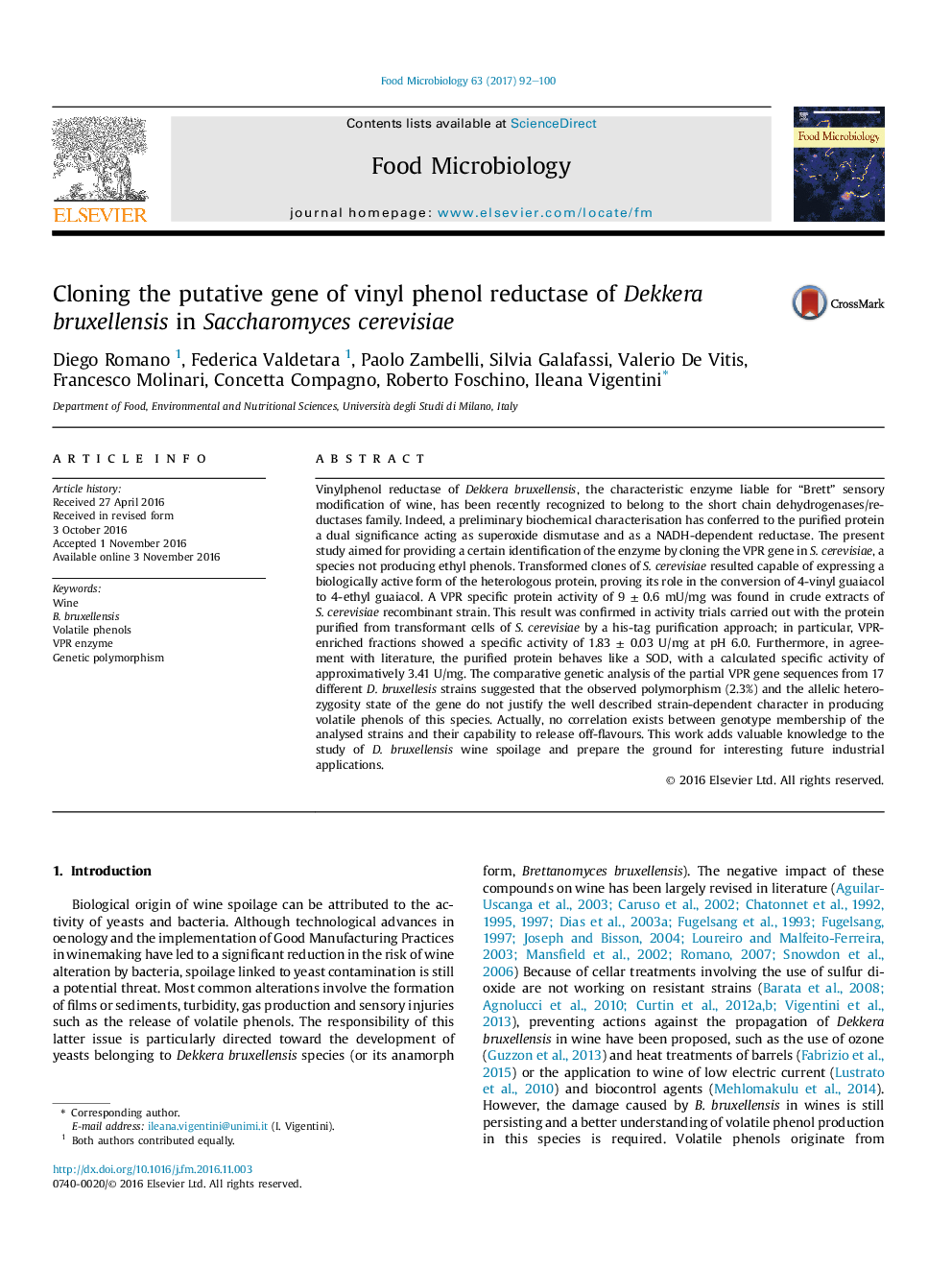| کد مقاله | کد نشریه | سال انتشار | مقاله انگلیسی | نسخه تمام متن |
|---|---|---|---|---|
| 5740173 | 1616238 | 2017 | 9 صفحه PDF | دانلود رایگان |

- VPR enzyme of B. bruxellensis has been identified through the expression of a functional protein in S. cerevisiae.
- The Rossmann fold-like region of VPR, involved in the reductase activity, is a conserved domain in D. bruxellensis.
- No direct correlation exists between the genetic polymorphism of VPR gene and the production of volatile phenols.
- VPR is a SOD; this evidence is particularly interesting in terms of adaptive evolution of the species to wine environment.
Vinylphenol reductase of Dekkera bruxellensis, the characteristic enzyme liable for “Brett” sensory modification of wine, has been recently recognized to belong to the short chain dehydrogenases/reductases family. Indeed, a preliminary biochemical characterisation has conferred to the purified protein a dual significance acting as superoxide dismutase and as a NADH-dependent reductase. The present study aimed for providing a certain identification of the enzyme by cloning the VPR gene in S. cerevisiae, a species not producing ethyl phenols. Transformed clones of S. cerevisiae resulted capable of expressing a biologically active form of the heterologous protein, proving its role in the conversion of 4-vinyl guaiacol to 4-ethyl guaiacol. A VPR specific protein activity of 9 ± 0.6 mU/mg was found in crude extracts of S. cerevisiae recombinant strain. This result was confirmed in activity trials carried out with the protein purified from transformant cells of S. cerevisiae by a his-tag purification approach; in particular, VPR-enriched fractions showed a specific activity of 1.83 ± 0.03 U/mg at pH 6.0. Furthermore, in agreement with literature, the purified protein behaves like a SOD, with a calculated specific activity of approximatively 3.41 U/mg. The comparative genetic analysis of the partial VPR gene sequences from 17 different D. bruxellesis strains suggested that the observed polymorphism (2.3%) and the allelic heterozygosity state of the gene do not justify the well described strain-dependent character in producing volatile phenols of this species. Actually, no correlation exists between genotype membership of the analysed strains and their capability to release off-flavours. This work adds valuable knowledge to the study of D. bruxellensis wine spoilage and prepare the ground for interesting future industrial applications.
Journal: Food Microbiology - Volume 63, May 2017, Pages 92-100